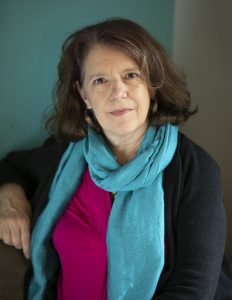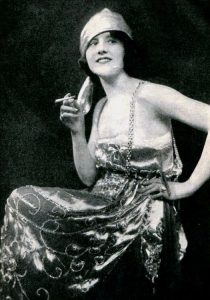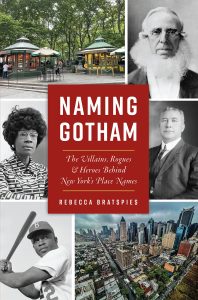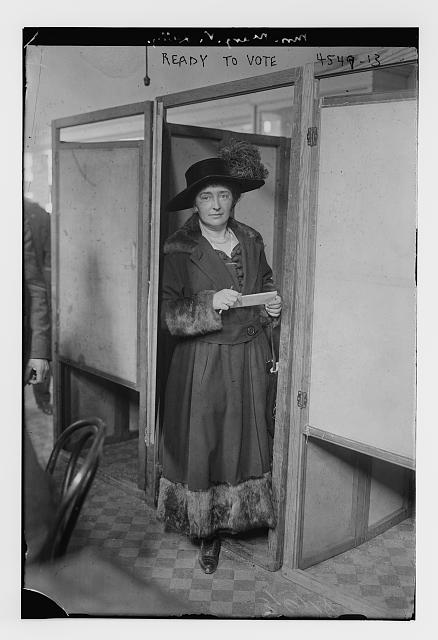From the Archives: Madame Lenormand’s Fortune Telling Cards
I am still deep in book mode, with a May 1 deadline bearing down on me--I feel a bit like the heroine in a melodrama who is tied to the tracks and knows the train is coming through the tunnel ANY MINUTE NOW. (Don't worry. I'm not waiting to be saved, though My Own True Love is making life easier anyway he can.) While I get myself off the tracks, here is a post for your amusement that originally ran in 2018. (Which seems like decades ago.)
* * *
Back in February I spoke at the Civil War Museum at Kenosha, Wisconsin, as part of their annual Civil War medicine weekend. I was a featured speaker, but the heart of the weekend was the 17th Corps Field Hospital--a Civil War reenactment unit from the Midwest that "heals the sick and treats the wounded 'Under the Yellow Flag'" at events across the country from February through October. Like the best re-enactors, they are accurate and passionate. They are also skilled performers. I urge you to attend one of their events if you get the chance.
As I wandered through the re-enactors' displays, I passed a woman seating at a small table in the corner. She was dressed in period appropriate-clothing, but her dress was more elaborate than any nurse would have worn and she had no exhibits laid out. "Read your cards?" she asked as I went by.
 I needed to distract myself from the inevitable pre-speech jitters,* so I sat down, prepared to be intrigued by tarot cards yet again. To my surprise, I was treated to a history lesson along with my card reading. Instead of using tarot cards, the reader used Lenormand cards, named after Madame Lenormand, a famous nineteenth century French fortune teller. (Some sources claim that Lenormand adapted the deck from a pre-existing parlor game, the "Game of Hope".)
I needed to distract myself from the inevitable pre-speech jitters,* so I sat down, prepared to be intrigued by tarot cards yet again. To my surprise, I was treated to a history lesson along with my card reading. Instead of using tarot cards, the reader used Lenormand cards, named after Madame Lenormand, a famous nineteenth century French fortune teller. (Some sources claim that Lenormand adapted the deck from a pre-existing parlor game, the "Game of Hope".)
We don't know much about Lenormand's early life--her biographies are inconsistent and have the whiff of mythology. She is generally believed to come from Normandy--le normand. What we do know is that Marie Anne Adelaide Lenormand (1772-1843) rose to fame during the Napoleonic era, reading the cards of notable figures who passed through Paris. According to one account, she once read Napoleon's cards. Instead of telling him what he wanted to hear, she informed him that according to the cards he would ultimately be unsuccessful in his military conquests--a piece of fortune-telling integrity that landed her in jail for a time.
Lenormand successfully plied her trade in Paris for forty years, making enough good predictions for influential people to earn both a reputation and a small fortune.
As far as my reading went, that's between me, the card reader and the cards.
*Those jitters are crucial. They seem to be tied to the energy that makes the speech come alive. But they aren't comfortable.
Gertrude Whitney–A Guest Post by Rebecca Bratspies
Rebecca Bratspies is a longtime resident of Astoria Queens. When not geeking out about New York City history, she is a Professor at CUNY School of Law, where she is the founding director of the Center for Urban Environmental Reform. A scholar of environmental justice, and human rights, Rebecca has written scores of law review articles. Her most recent book is Naming New York: The Villains, Rogues and Heroes Behind New York Place Names. Her co-authored textbook Environmental Justice: Law Policy and Regulation is used in schools across the country. Bratspies is perhaps best known for her environmentally-themed comic books Mayah’s Lot, Bina’s Plant, and Troop’s Run, made in collaboration with artist Charlie LaGreca-Velasco. These widely adopted comic books bring environmental literacy to a new generation of environmental leaders.
Rebecca serves on NYC’s Environmental Justice Advisory Board, and EPA’s Children’s Health Protection Advisory Committee, is a scholar with the Center for Progressive Reform and a member of the NYC Bar Environmental Committee. ABA-SEER honored her work with its 2021 Commitment to Diversity and Justice Award. She was named the Center for International Sustainable Development Law’s 2022 International Legal Specialist for Human Rights Award, and her environmental justice advocacy has been awarded the PSC-CUNY “In It Together” Award, and the Eastern’ Queens Alliance’s Snowy Egret Award.
Today she's sharing one of the many stories of unexpected or forgotten New Yorkers from her book, Naming New York: The Villains, Rogues and Heroes Behind New York Place Names.
Take it away, Rebecca!
Gertrude Vanderbilt Whitney (1875-1942) was a woman ahead of her time. As the eldest daughter of the eldest son of the richest family in American (her parents were Cornelius Vanderbilt II and Alice Claypoole Gwynne) she was heiress to a vast fortune. She grew up in an opulent 137-room Fifth Avenue mansion, attended the Brearley school, and spent summers at the Breakers—the family’s massive Newport Rhode Island summer home. But, from an early age, it was clear that Gertrude’s ambitions did not fit neatly into the society life scripted for “Miss Vanderbilt.”
As a child, Gertrude longed to be a boy. She went so far as to cut off her hair, an act she described as an attempt to rid herself of the main difference she saw between herself and her brothers. She was punished severely. As she grew into a teen and a young adult, Gertrude’s diary revealed her torment over the idea that people only pretended to like her because of her wealthy family.
As a young woman, Gertrude shared a romance with Ester Hunt, daughter of architect Richard Morris Hunt. In her journal, Gertrude wrote “I loved her more yesterday afternoon than I have ever done before. I felt more thrill at her touch, more happiness at her kiss.” Gertrude’s disapproving mother forbade her to see Esther and began a campaign to launch Gertrude into New York society, surrounding her with young men deemed eligible.
The strategy seemed to work, Gertrude was rapidly married off to the boy next door—the wealthy, well-connected Harry Payne Whitney. The two had virtually nothing in common and led mostly separate lives. Harry was a sportsman, who cared mostly about horses, playing polo, and hunting. Gertrude was an artist, in fact a sculptor. Gertrude and Esther continued a steamy correspondence until Esther’s death in 1901.
Gertrude had to fight to be taken seriously as an artist. Drawing and painting were considered appropriate activities for young women of her class (at least until they had children) but only as a mild kind of hobby. Neither her husband nor her family supported her artistic ambition and the wider world continually reminded Gertrude that serious art “wasn’t done by people in my position.” And, regardless of social class, women were definitely not supposed to sculpt.
Concerned that her society name and her female gender would brand her a dilettante, Gertrude did her earliest work under a pseudonym. But after her (male nude) sculpture Aspiration was selected for the 1901 Pan-American Exposition, Gertrude began working under her own name. She proved to be a talented sculptor, and her work was exhibited in major art shows across the country.
During World War I, Gertrude personally funded the construction and staffing of a 225-bed hospital just behind the front lines in France. During the Winter and spring of 1914-1915, she frequently visited the hospital, bringing supplies, assisting the administration, and sketching the patients.
After the war, Gertrude translated those wartime experiences into her art. She sculpted the Washington Heights War Memorial at 168th St and Broadway, panels for the New York victory arch, and a statue in St. Nazaire, France where the first contingent of the American Expeditionary Force landed. She also designed a massive cubist Columbus statue in Huelva Spain. This statute towers 114 feet over the harbor that launched Columbus’s 1492 voyage. She viewed these statues as “links which will serve to bind Europe and the United States even closer.” Her last sculptures were a Monument to Peter Stuyvesant, and Spirit of Flight, commissioned for the 1939 World’s Fair in Flushing Meadow.
Gertrude’s best work is generally considered to be her design for the 1922 Titanic Memorial. The dramatic statue of a partially clothed young man standing with arms spread wide likely inspired the iconic scene in the 1997 Titanic movie. For Gertrude, this project was extremely personal because her older brother Alfred had died in similar circumstances with the 1915 sinking of the Lusitania. The Titanic memorial, which was unveiled by First Lady Helen Taft in 1931, bears an inscription dedicated “to the brave men who perished in the Titanic. They gave their lives that women and children might be saved.” This inscription makes it clear that the statute was intended to commemorate the first-class male passengers who died in the wreck, conveniently forgetting the scores of women and children, mostly traveling third-class, who also died.
Early in her career, Gertrude scandalized New York society by setting up her art studio at 19 Macdougal Alley in Greenwich Village. Headlines blared Daughter of Cornelius Vanderbilt Will Live in Dingy New York Alley. Nevertheless, Whitney built her studio, and apparently enjoyed a riotous bohemian lifestyle there—a sharp contrast to her otherwise aristocratic uptown existence.
Over time, Gertrude purchased the entire block of Macdougal Alley and turned it into the Whitney Studio club. She used the space to host exhibits, shining a spotlight on young artists like Edward Hopper, Robert Henri, Georgia O’Keefe, and George Bellows. She was a strong supporter of avant garde art, particularly the Ash Can School. Gertrude supported promising young artists with housing and stipends, and often purchased their work. She made a special point of supporting women artists.
Gertrude amassed an enormous collection of American art. In 1929, she offered to donate most of this collection to the Metropolitan Museum of Art—along with a $5 million endowment. The Met infamously declined the gift. Whitney responded by turning the Whitney Studio into the Whitney Museum of American Art, the first museum dedicated to contemporary American art. Today the Whitney possesses the world’s largest collection of American Art.
Gertrude’s work won her significant recognition. She was awarded honorary degrees from Russell Sage College, Rutgers University, Tufts, and NYU. She was awarded the French Legion of Honor in 1926, and perhaps most surprisingly was named to the National Dairy Association National Honor Roll in 1941 for developing a herd of 14 cows that produced 427 pounds of butter.
Gertrude died on April 18, 1942. She was 67 years old.
In which I vote
I am writing this on Tuesday morning. Earlier today I walked across the street to vote.* Those of you who have hung around here on the Margins know how much I love to vote, but I approached the polls today with a serious lack of enthusiasm. The day was cold and wet and the choices on the ballot were uninspiring. It was clear watching from my office window** that I was not the only unenthusiastic voter in the 4th ward. Instead of the usual mass of poll watchers lining the sidewalk, there was one lone man in a clear plastic poncho. Voters came one at a time, with long gaps in between.
I sucked it up and headed out, because voting is important. (Normally I would say thrilling, but I wasn't feeling it.)
The man in the clear poncho met me on the sidewalk at the appropriate distance from the polling place door. I was pleased to be able to tell him that I planned to vote for his candidate and told him how impressed I was that he was out in what was really unpleasant weather.
He smiled. “I’ve been here since 5:30.”
I walked into the school auditorium feeling a little better because one man cared enough about local politics to stand in the rain at 5:30 in the morning talking to voters.
Once inside, there was no energy in the room. I was the only voter. The election judges were drooping. (In fact, the woman next to the machine you feed the ballots into was asleep.) I voted: two quick marks, one for mayor and one for alderman. When I handed my ballot sleeve and marker back to the election judge, he said, almost by rote, “Thank you for voting.”
Back in the days when I lived in a predominately Black neighborhood, the right answer to that was “It’s a privilege.” I decided to go for it.
“It’s a privilege,” I said and smiled. I felt better even as I said it.
Three election judges sat up straight and smiled back. “Yes, it is,” one of them one of them said, with an emphatic nod. "It surely is."
I bopped back across the street, happier than when I walked out the door. Because voting is a privilege. One worth defending.
* Yes, my polling place is directly across from my front door.
**Again, right across from the polling place



